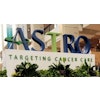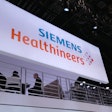Stereotactic body radiation therapy (SBRT) yielded higher overall survival rates and low toxicity for patients with inoperable, non-small cell lung cancer (NSCLC) compared to conventional radiation therapy, according to research presented on Monday at the American Society for Radiation Oncology (ASTRO) meeting in Boston.
Scientific session presenter and lead author Dr. Yasushi Nagata, a radiation oncologist at Hiroshima University in Hiroshima, Japan, told attendees that SBRT should be the new standard treatment for patients with inoperable NSCLC, replacing conventional radiotherapy.
This was the second report of findings from Japan Clinical Oncology Group (JCOG) trial 0403, the purpose of which was to evaluate the safety and efficacy of SBRT in patients with both operable and medically inoperable T1N0M0 non-small cell lung cancer. This portion of the JCOG study evaluated the safety and efficacy of SBRT in 100 patients with medically inoperable NSCLC who were followed for a median of 37 months. The patients received treatment between June 2004 and November 2008 at one of 15 hospitals located throughout Japan.
At the start of the study, 104 patients were included: 77 men and 27 women, ranging in age from 59 to 90 years (median age, 78 years). Patients had a median tumor size of 21 mm (range, 9 to 30 mm), and 50 patients had adenocarcinomas, 40 had squamous cell carcinomas, and 14 had other types of lung cancer. All patients completed the protocol treatment; they were treated with 48 Gy of radiation at the isocenter in four fractions for four to eight days.
Four patients were eliminated from the study results after completion. Three of the patients were diagnosed with another cancer within five years after registration, and one patient received treatment with chemotherapy in combination with SBRT.
At the three-year follow-up, overall survival was 59.9%, progression-free survival was 49.8%, local progression-free survival was 52.8%, and event-free survival was 46.8%.
The majority of patients experienced only mild toxicity from the treatment. Of the grade 3 adverse events, 10% of patients experienced dyspnea, 8% experienced hypoxia, 7% developed pneumonitis, 2% had chest pain, and 1% had cough. Only 2% of patients developed grade 4 adverse events of dyspnea and hypoxia. None of the patients experienced grade 5 toxicities.
The study follows a report on operable patients with NSCLC that Nagata and co-authors presented at the 2010 ASTRO annual meeting. Sixty-five patients with operable NSCLC who elected to have SBRT (48 Gy in four fractions over four to eight days) at one of 15 hospitals between July 2004 and January 2007 instead of surgical resection were followed for a median of 45 months.
The study showed that SBRT for operable stage I NSCLC is highly effective with mild toxicity, according to the researchers. Nagata and colleagues suggested that SBRT could be an alternative to surgery and should be considered as a treatment option, especially in elderly patients.



















